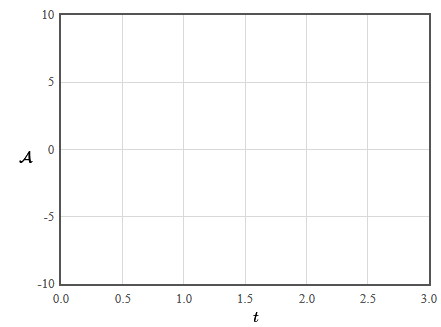
Name:
Student number:
Problem 1
At time $t=0$, an electron is at position $\vec{r}=0$ and has a velocity $\hat{y}$ m/s. The electron is in an electric field of $\hat{x}$ V/m. Where is the electron at time $t=$ s?
$\vec{r} = $ $\hat{x} + $ $\hat{y} + $ $\hat{z}$ [m]
Electron mass = $9.10938356 \times 10^{-31}$ kg Electron charge = $-1.6021766208 \times 10^{-19}$ C
Problem 2
The position vector of a partcle is,
Here $t$ is the time in seconds. The total force acting on the particle is , where $x$ is the position in meters and $v$ is the velocity in m/s. How much work must be performed to move the particle between time $t=0$ and $t=$ s?
What is the magnification of the image?
$m=$
Problem 6
Two-dimensional waves are sent out from the point $\vec{r}_1=-2\hat{x}$ [m]. These waves are described by,
Plot the wave that is observed at $\vec{r}=2\hat{x}$ [m].

Plot the wave along the $y$-axis at time $t=0$.
